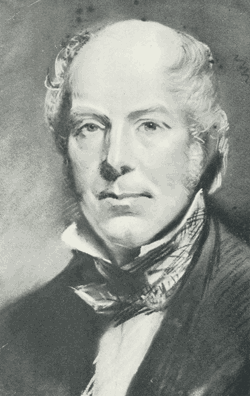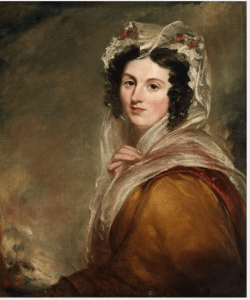Martin Cregan facts for kids
Quick facts for kids
Martin Cregan
|
|
|---|---|

Self portrait
|
|
| Born | circa 1788 |
| Died | 10 December 1870 (aged 81–82) |
| Resting place | Mount Jerome Cemetery |
| Nationality | Irish |
Martin Cregan (1788 - 10 December 1870) was an important Irish portrait painter. He was known for painting many famous people in Ireland during his time. He also played a big role in the Royal Hibernian Academy, an art school and gallery in Dublin.
Contents
Early Life and Artistic Beginnings
Martin Cregan was born in 1788 in County Meath, Ireland. He was raised by foster parents, the Creggan family, in Martinstown. He later took their name, changing it slightly to Cregan.
When Martin was still a child, he went to work for the Stewart family in Killymoon, County Tyrone. The Stewarts quickly noticed his amazing talent for art. They decided to help him pursue his passion.
Learning to Paint
Around 1804, the Stewart family paid for Martin to study at the Dublin Society Schools. He was a very good student and won medals for his drawing in 1806 and 1807.
After his studies in Dublin, the Stewarts continued to support him. They sent him to London to learn more about painting. In London, Martin became the first and only student of a famous artist named Martin Archer Shee.
Family Life and Later Years
In 1816, Martin Cregan married Jane Schwertzel in London. Her father, Henry Schwertzel, worked for the British Royal family. Martin and Jane had a very large family with 16 children! One of their sons, William Stewart Cregan, also became an artist and showed his paintings at the Royal Hibernian Academy a few times.
Martin Cregan lived in different places in Dublin during his life. He passed away at his home on Lennox Street on December 10, 1870. He was buried in Mount Jerome Cemetery.
Today, the Dublin National Gallery has a copy of a painting by Martin Cregan. It's a copy of a portrait of Master Crewe by Sir Joshua Reynolds. Years after his death, in 1889, another artist named Sir Thomas Jones painted a portrait of Martin Cregan himself.
Martin Cregan's Art Career
From 1812 to 1821, while living in London, Martin Cregan showed his paintings every year. He exhibited his work at important places like the Royal Academy and the British Institution.
In 1822, he moved back to Ireland and settled in Dublin. He quickly became a well-known portrait painter there. His art studio was located on Leinster Street.
Leading the Royal Hibernian Academy
Martin Cregan was one of the founding members of the Royal Hibernian Academy (RHA) in 1823. The RHA is a special place for artists in Ireland, helping them learn and show their work. He was chosen as the Academy's first secretary.
At the RHA's very first exhibition in 1826, Martin Cregan displayed 26 of his own paintings. He continued to show his art at the RHA until 1859.
In October 1832, Martin Cregan was elected as the president of the RHA. He held this important position for 23 years! Towards the end of his time as president, the RHA faced some challenges, including financial difficulties. Cregan tried to make changes to improve the Academy. He supported the secretary, Michael Angelo Hayes, who had new ideas that some older members didn't like.
In 1856, Matthew Kendrick was elected as the new president. However, Cregan didn't accept this at first and held onto the Academy's important documents. He finally accepted defeat in October 1857 when George Petrie was elected president. Later, after a government report and new rules for the RHA were put in place, Cregan and Hayes were brought back into their roles.
Famous Portraits
During his most successful years, Martin Cregan was considered one of the best portrait painters in Dublin. He painted many important people in Irish society. He was even the official portrait painter for the Lord Lieutenant of Ireland, who was like the king's representative in Ireland.
Later in his life, Cregan faced competition from another talented artist named Stephen Catterson Smith. But Cregan kept painting until the very end. He was working on a painting for a church when he passed away.


